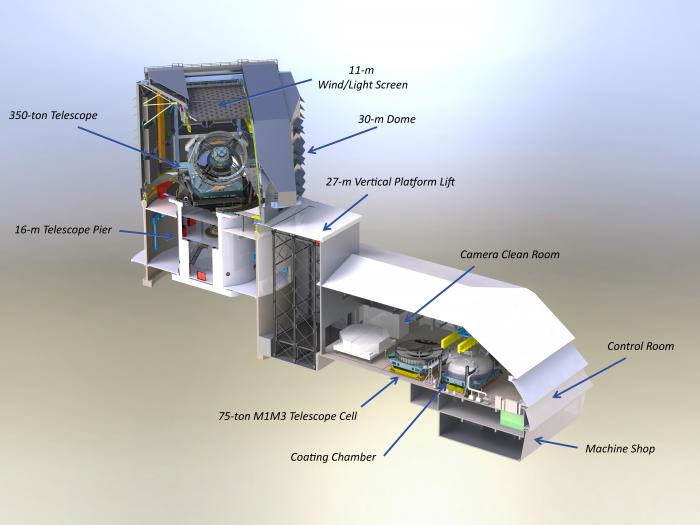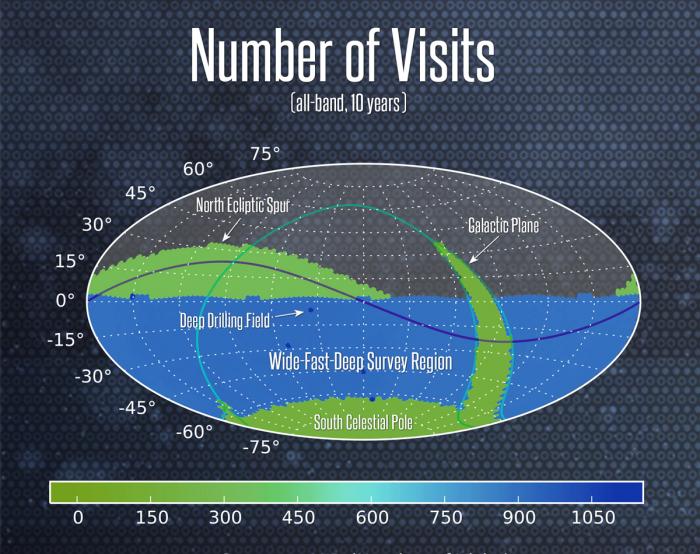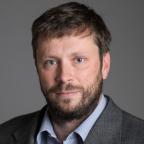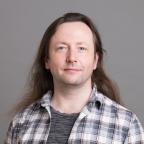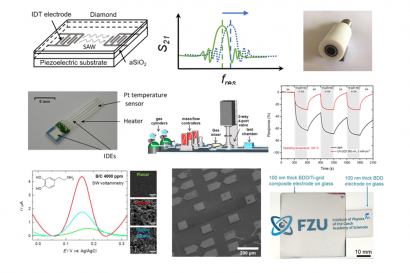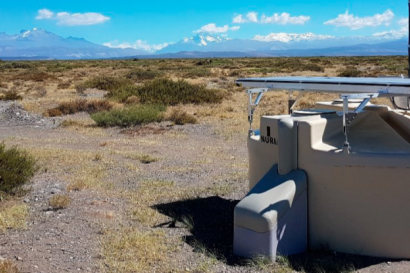Vera C. Rubin Observatory, Legacy Survey of Space and Time (LSST) (www.lsst.org) is a new telescope under construction in Chile. First observations of the deep and dynamic universe are planed for 2022. The facility will provide a vast astronomical dataset with unprecedented discovery potential. LSST is designed to conduct a deep survey all over the sky taking repeat images of the sky every few nights in multiple bands for ten years to create astronomical catalogs considerably larger than the existing ones. Our activities include working on both, the instrumentation and the sky objects detection.
The LSST will be unique in several ways: mirrors, the world's largest camera, and the data processing, which will allow to conduct a survey capturing billions of objects and measuring their properties. The data will be used to create a detailed and dept three-dimensional map giving us a new view of the Universe. This map will serve to locate the dark matter, to characterize dark energy, to track transient objects, to study Milky Way, and to detect asteroids near the Earth.
The team is involved in the analysis of instrumental effects within LSST and the properties of the sensors. This research is focused on three main topics, the analysis of hits by X-ray photons from a 55Fe source, the characterization of surface features on ITL devices their effect on the local UV quantum efficiency and on the 'tree rings' effect.
Tree rings (in Fig 3. the left-hand image) is one of the major sensor effects affecting modern thick fully depleted CCDs, caused by the peculiarities of silicon wafer manufacturing process. The growing of a mono-crystal silicon boule leads to a circularly symmetric variation of the dopant concentration. This results in an occurrence of a parasitic electric field in the direction orthogonal to the drift of photoelectrons causing a systematic displacement from their nominal trajectories towards the CCD gates. The effect thus appears as the formation of tree-ring-like patterns visible in the images taken at a uniform illumination (so called "flat field" images). As a consequence, it leads to the position-dependent distortions of the point spread function, along with systematic position-dependent astrometric shifts. All this may impact the performance of LSST survey in detection and characterisation of various fine astrophysical effects of object shape distortion (including the weak lensing statistics, which is a crucial observable to be pursued by the LSST), and thus requires precise understanding and thorough laboratory investigation.
The X-ray photons emitted by the 55Fe isotope are useful tool for photosensor response studies. They provide well defined signal in terms of both, the energy deposited and the size of the area where electron-hole pairs are created. The measurements obtained with this method are used to verify the gain of the sensor and its local variations. The shape of the hits can be used for diagnostic purposes as it is sensitive to the charge transfer inefficiency and local sensor properties.
The surface features on ITL devices occur at short wavelengths, between 320nm and 400nm, and manifest themselves as the appearance of "stains" on the flat field measurements (the right-hand image in Fig. 3). The photons in UV are absorbed so close to the surface that they interact with any monolayers of material on the surface of the sensor. The surface can be covered by an extra layer of dust and poorly formed oxide of silicon due to the etching of the backside surface. This absorption can create some disturbance in backside charging and can change the local UV quantum efficiency. Studying the spatial variations of quantum efficiency allows providing a handle on some very important parameters for LSST photometry.
The members of our group recently joined the Transients and Variable Stars (TVS) science collaboration where we plan to implement various real-time transient characterization and classification algorithms for detecting off-axis (orphan) gamma-ray bursts, contribute to identification of objects (AGNs, tidal disruption events) and their use in multi-messenger studies for instance in combination with neutrinos.
